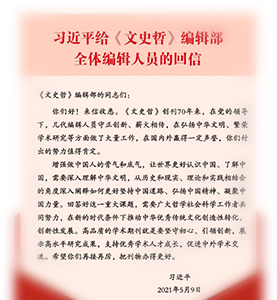“思与境偕”是“情景交融”吗?——基于司空图诗歌创作的考察 孙学堂
研究者通常把司空图所说的“思与境偕”解释为“情景交融”,然而从司空图的诗歌创作看,他并不追求情景交融的审美意境。他的诗明显具有重“思”的特点,但他所重视的“思”不是感性和直觉状态的“情思”,而是以他特殊的观物方式和思维方式观照和“处理”客观境象,经过“转念”“思考”而产生的更曲折、更深邃的“想法”。“思与境偕”作为司空图艺术追求的核心内容,似针对唐末过于偏重写实的风尚所提出,其重点在强调“思”的重要性,是一种重主观的诗论,而不像我们通常认为的那样,强调艺术表现中主客体双方的平衡。
Does “Thinking in the Company of Senery” Mean “Feeling and Setting Happily Blended”?—A Discussion Based on Sikong Tu’s Poetic Creation Sun Xuetang
Researchers usually interpret “thinking in the company of senery” said by Sikong Tu as “feeling and setting happily blended.” Yet judging his poetic creation, Sikong did not pursue such aesthetic conception. There is obvious characteristics of valuing “thinking” in his poems, but this kind of “thinking” does not mean perceptual and intuitive affection, but more circumlocutory and profound “ideas” generated from consideration and reconsideration when perceiving and “dealing” objective circumstances with his unique way of observing and thinking. As the core content of Sikong’s artistic pursuit, such idea seems to aim at the excessively realistic style in the late Tang dynasty. It is a kind of poetic theory focusing on the importance of “thinking” and subjectivity, but not to emphasize the balance between the subject and the object in artistic expression.


